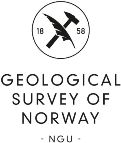

|
Norsk versjon | ||||
| THE INDUSTRIAL MINERAL DATABASE | |||||
| Deposit Area 1833 - 330 | |||||
| (Last updated 07.des.2015) | |||||
Name of Deposit Area : Store Esjeklumpen |
| (Object Id : 1833,330,00,00) |
| Location |
| County : | Nordland (18) | Municipality : | Rana (1833) |
| Map 1:50000: | Mo i Rana (1927-1) | Map 1:250000: | Mo i Rana |
| Marking point: | Longitude: | 13.8994170 | Latitude: | 66.3300560 |
| EU89-UTM Zone 33 | (Coordinates IS confirmed) |
| X-coord: | 450696 m. | Y-coord: | 7357133 m. |
|
|
| Commodity |
| Main Type: | Talc | Sub Type: | Talc (Soapstone) |
| Production |
| Activity: | Test mining | Reserves: | 1040 thousand tons | |
| Prod. method: | Open pit and underground mining | Production: | ||
| Prod. status: | Volume of dump: |
| Importance |
| Public: | National Importance (reg. 20.02.2015) |
| Economical: | Very significant , (Confirmed 08.mai.2006 by Rolf Lynum) |
Products |
| Element/product | Crude ore grade or quality | |
| SOA/TA | % |
Operations |
| From - To | Activity | Comments | |
| 1990 - 1992 | Core drilling | Company/Institution :Norwegian Talc | |
| 1990 - 1993 | Geology | Company/Institution :Norwegian Talc, NTH | |
| 1991 - 1991 | Geophysics | Company/Institution :NGU |
Mineralization |
| Era: | Paleozoic | Period: | Silurian | |
| Dating: | Method: | |||
| Genesis: | Metasomatic | Form: | Lens | |
| Main texture: | Structureless | Min. distribution: | Massive (>50 % ore minerals) |
| Main grain size: | Medium grained (1-3 mm) |
| Strike/Dip: | 45 / 45 | Direction: | 45 | |
| Plunge: | 45 |
| Stratigraphic classification of host rock |
| Era: | Paleozoic | Period: | Silurian |
| Province: | ||
| Geotec.unit: | ||
| Tectonic complex: | Rødingsfjelldekkekom | |
| Igneous complex: |
| Group: | Formation: |
Mineralogy |
| Relationship | Mineral | Amount | |
| Not defined | Talc | Major mineral (>10%) | |
| Not defined | Magnesite | Major mineral (>10%) | |
| Not defined | Magnetite | Accessory mineral (<1%) | |
| Not defined | Chlorite | Accessory mineral (<1%) |
Structures |
| Location: | Type: | Orientation(360 gr.): | Relation to min.: | |
| Wall rock | Foliation | Strike/Dip :60 / 45 | Syn-mineralisation ;...Effect :Modifies |
Information(s) in free text format |
| Free text |
| Store Esjeklumpen is an 800 m long and up to 180 m thick exposed ultramafite situated approximately 3 km south-west of the present mine. The ultramafite is dominated by serpentinite, while talc-carbonate ore is exposed locally outside the serpentinite core. The occurrence of talc-carbonate ore was already known in the 1930's, when a small shaft was driven in the south-western part of the ultramafic body. In the years 1990-1991 two diamond core-drilling programs were established by Norwegian Talc Altermark AS (Edvin Rian) to investigate the size of the ore. The first program formed the basis of a civil engineer thesis by Holter (1990). The second program was included in a doctoral thesis by Karlsen (1995), but is otherwise reported in internal reports by E. Rian and T.A. Karlsen. 3720 m were drilled in the years 1990-1991. Although quite a lot of drill-core information is lacking, an estimated tonnage of around 2.5 mill. tonnes, including both proven, probable and possible resources, is a quite realistic estimate. |
Bibliography: |
| From NGU's Reference Archive: |
| Søvegjarto, U.; Marker, M.; Graversen, O. , 1988 |
| Mo i Rana. Berggrunnskart; Mo i Rana; 19271; 1:50 000; trykt i farger; |
| ;Norges geologiske undersøkelse;KART |
| Karlsen, Tor Arne ; Rian, Edvin ; Olesen, Odleiv , 2000 |
| Overwiew of talc resources in the Altermark talc province, northern Norway, and possible uses of the talc ore |
| ;Norges geologiske undersøkelse;TIDSSKRIFTARTIKKEL;NGU Bulletin; No.436;93-102 pages |
| Abstract: | |
| Active prospecting during the past 10 years has proved that the Altermark area contains much more talc than previously recognised in the Nakkan-Esjeklumpen area, 10 M tonnes or more of talc-carbonate ore are probably present, distributed in ultramafic bodies. The ore, which occurs as one of several layers within compositionally zoned ultramafic lenses dominated by antigorite serpentinites, has the following general mineralogy; talc (45-65%), carbonate (30-50%), chlorite (0-4%) and magnetite (0-3%). Relative to other known similar deposits, the ore is rather coarse-grained, and the minerals tend to be idio- blastic. Several products can be made from the talc-carbonate ore. By applying flotation or other kinds of mineral separation techniques, it is likely that high-quality talc-concentrate could be made in addition to calc-carbonate mixtures. a concentrate of by-product breunnerite would possibly be of ecomonic value. |
| The fact sheet was created on 22.11.2024 |
| Questions or comments regarding the fact sheet can be emailed to: ressursdatabaser@ngu.no |
| Copyright © 2024 Geological Survey of Norway |